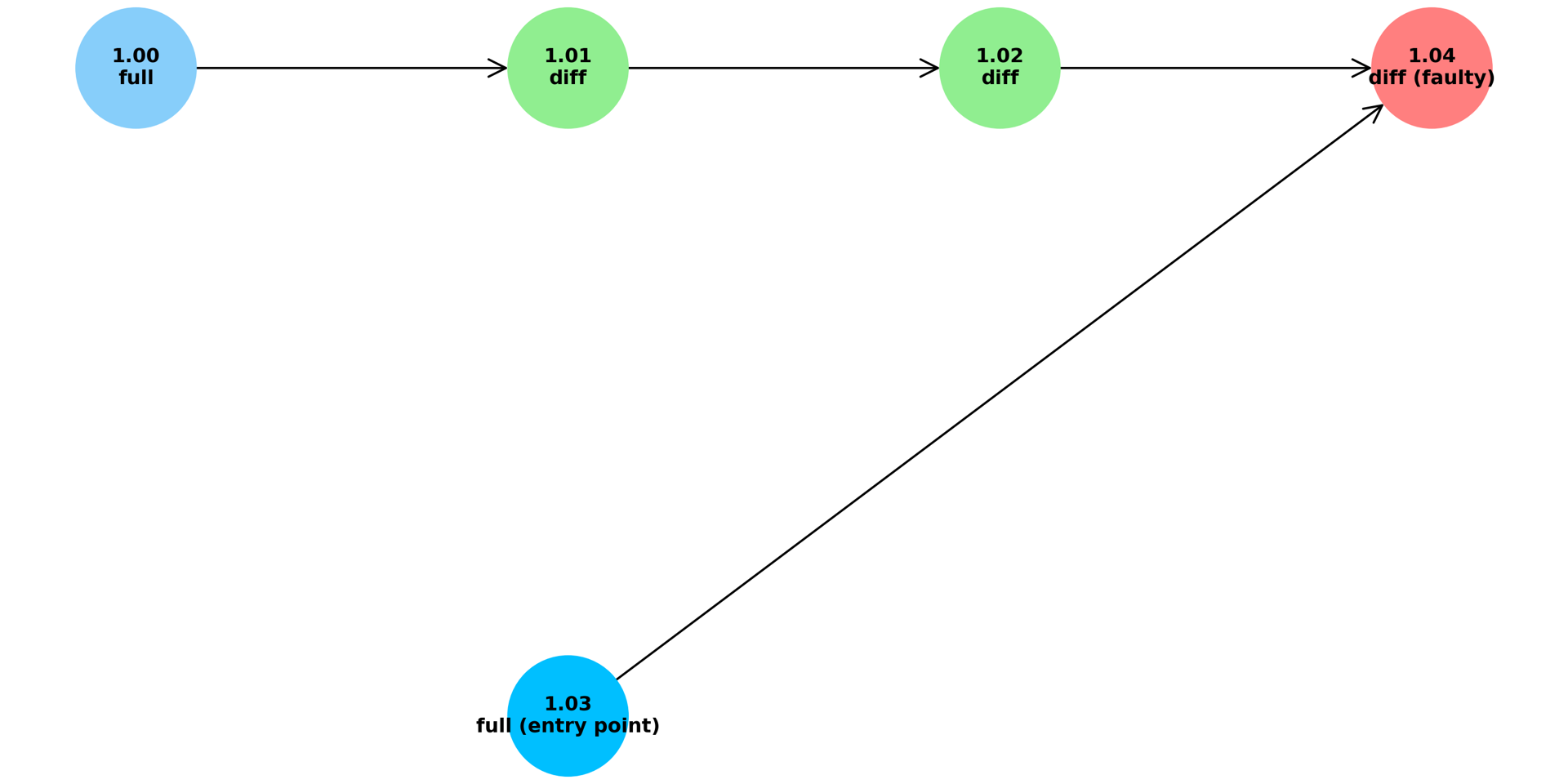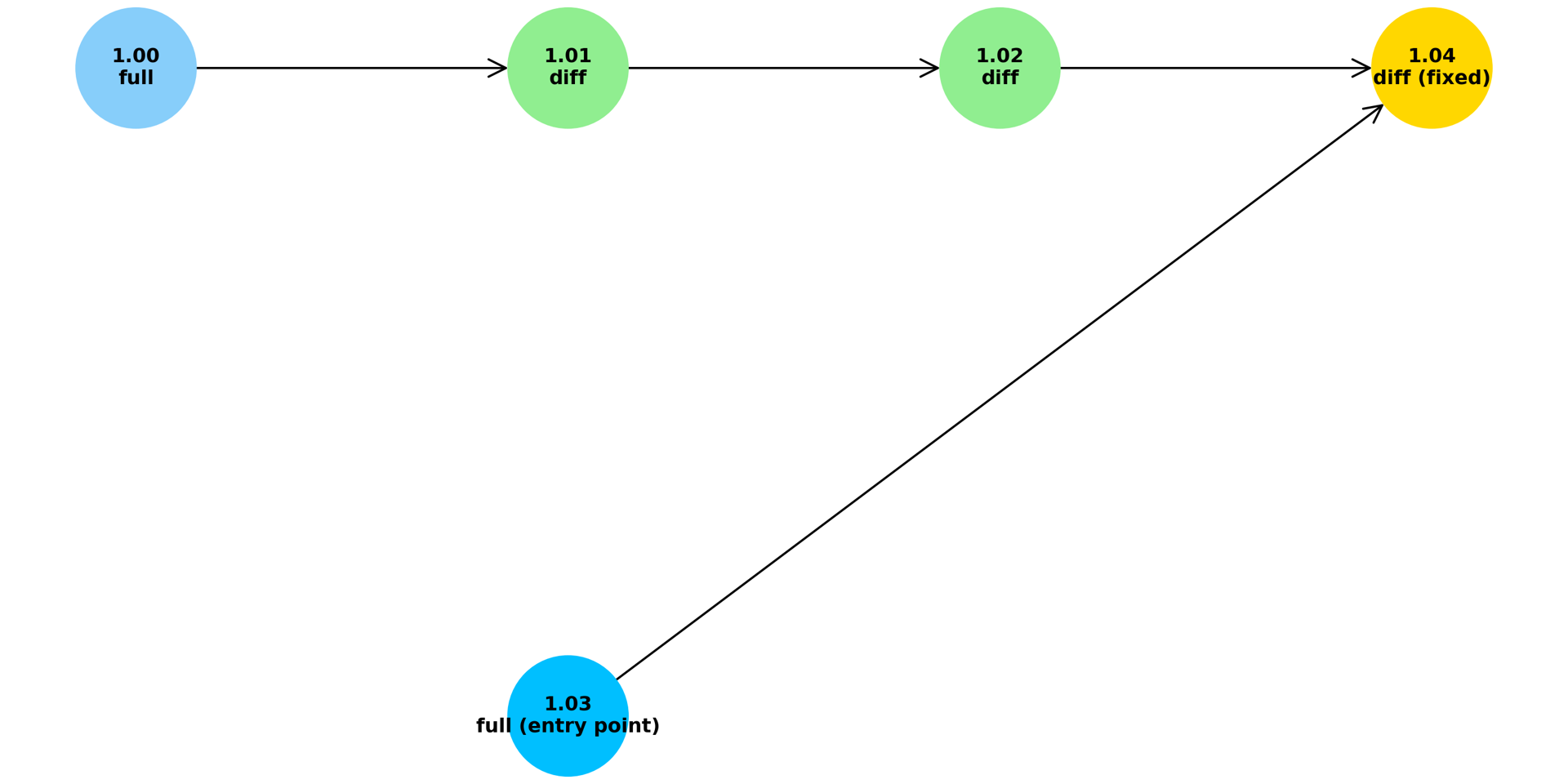PRODUCT
Versioned Data Sync Spec
📄 Engineering spec for Halal Maps — Designed for scale, speed, and reliability
🔧 Purpose
To keep users’ restaurant data updated without wasting bandwidth. The sync system enables:
- Offline functionality
- Diff-based updates between versions
- Full updates when necessary or when it is most bandwidth-efficient option
- Hash validation to ensure data integrity
- Mobile-friendly performance
🧩 The Problem
Restaurant data changes frequently — status updates, business details, etc. Fetching the full dataset every time leads to:
- High and wasteful data usage for unchanged data
- Inefficient approach to scale app to many users
The solution needed to:
- Detect version differences
- Deliver only what’s changed
🧠 Solution Overview
We implemented a multi-stage versioned sync system, optimised for bandwidth efficiency and safety.
3 Layers:
metadata.json— ultra-lightweight (~150B), includes current version + hashmanifest.json— lightweight (~1-3KB) guides the client on most effective update path- Dataset files — will download and update specified file paths
🔄 Sync Logic (Client-Side)
- On launch, app checks last time a version check was performed
- If more than 24 hours → fetch live
metadata.json - If app version/hash mismatch live metadata → fetch
manifest.json - Based on manifest, download either a full or diff update path
- Validate update via SHA-256 hash to confirm download integrity
- Apply and save locally
🔁 Version Flow Logic
The sync system manages data updates through a version chain, where each dataset file is either a full version or a diff(incremental) update. Each file includes:
- A
version(e.g.1.00,1.01,1.02) - A
type:"full"or"update" - A
toVersion, which tells the app what comes next - An
entrypoint, which tells the app where to start for new users
There are two main update paths the system supports:
1. Diff-Based Update Chain (for active users)
Users who started from the first full version (1.00) are updated progressively using small diff files:
1.00 (full) → 1.01 (diff) → 1.02 (diff) → 1.04 (diff)Each diff contains only the data changes from the previous version. ✅ This path is ideal for users who open the app regularly and stay up to date. ✅ It saves bandwidth because most diffs are just a few kilobytes.
2. Full Update Entry Point (for new or out-of-sync users)
At a certain point, we create a new full snapshot (e.g. at diff update 1.02 we simultaneously created a full checkpoint update 1.03) that becomes the new entry point:
1.03 (full) → 1.04 (diff)This path is used when:
- A user installs the app for the first time
- A user’s current version isn’t recognized
- The local dataset hash doesn’t match (e.g. corruption or manual wipe)
✅ This keeps syncing reliable without forcing a long diff chain
✅ Users still get to the latest version (1.04) in just two steps
🌍 Why This Matters
This hybrid system is designed to minimise bandwidth usage while keeping all users in sync:
- Regular users download only small diffs (e.g. 5–15KB vs. full file sizes of 1–2MB)
- Infrequent or new users skip the diff chain and enter through the latest full snapshot
- No unnecessary downloads — the system always chooses the most efficient path
- Robust fallback — full versions ensure users can recover from any sync mismatch
📁 Example of a version chain
🛠 Debugging & Recovery
The sync system includes built-in safeguards for debugging and rollback without disrupting users
🧯 Handling Faulty Updates
If an update is later found to be faulty:
- We can overwrite the file on the server to correct it
- Users who haven’t downloaded it yet will get the corrected version
- The update chain remains intact — no reversion of other diffs or full versions is required
🔐 Hash Validation on Device
Each file is hashed using SHA-256, and the client always verifies it before applying:
- If a user already downloaded a faulty file, the app will detect a mismatch between the faulty update's hash and the expected fixed update's hash in the manifest
- When this happens, the client:
- Abandons the bad update
- Follows the manifest’s fallback path
- Downloads from a newer full update entry point
🔐 Example
- If version
1.04is faulty, it can be silently overwritten on the server. - Users who already downloaded the bad file will fail hash validation on the next metadata check and will automatically fallback to a full update path (e.g.
1.03 → 1.04). - This allows fixes without breaking the update chain or requiring an app update. From the user's perspective, the fix is silent — the system simply delivers the right file on the next sync attempt.
- This allows developers to correct issues without invalidating or rewriting the whole update chain.
✅ Why This Matters
- No app update is needed to fix a broken data file
- Users with broken versions self-heal through manifest logic
- This makes the system safe to iterate, even in production
- It supports fast patching, without disrupting unaffected users
🛠 Backend Dashboard
- Controls creation and publishing of new dataset versions
- Includes a test mode for safe simulation of updates before production push
- Enables non-technical contributors to QA data changes before they go live
📊 Results
- Can lead up to ~95% reduction in update payload
- Scales easily as the number of users or restaurants grows
- Keeps bandwidth associated costs low
🧱 Possible Future Improvements
- Add compression to updates
- Enable push updates to client with faulty data
- Real-time database connectivity with offline caching
👥 Stakeholder Benefits
- Users: Seamless experience with fast, low-bandwidth updates
- Engineering: Deterministic, easy-to-debug system
- Product/Ops: Controlled rollout via versioning
✅ Summary
This sync system is lightweight, scalable, and robust — keeping user data fresh without compromising performance. Built for Halal Maps, it’s equally applicable to any product handling structured, evolving datasets that requires offline functionality.
Contact Me

